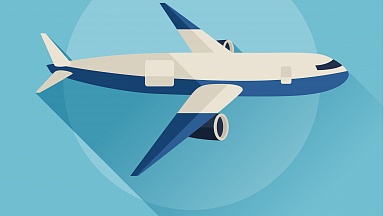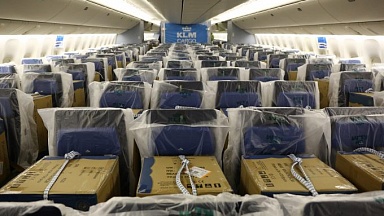Air freight volatility remains rife with the new year bringing few signs of abating pressure on global rates, according to some of the latest market analysis.
The overall Baltic Air Freight Index (BAI) rose to 3,155 this week — an increase of over 100% year-over-year. In the last few weeks it has recorded the highest absolute readings since the air freight capacity trough in Q2 of 2020, even as the traditional peak season subsides.
Several issues are contributing to persistent, elevated levels, noted Bruce Chan, vice-president and senior analyst, Global Logistics & Future Mobility Equity Research, at investment bank and financial services company, Stifel.
«On the demand front, restocking activity has been a major driver of global freight recovery across all modes, including air. Inventory to sales metrics remain near record lows in international consumer markets, particularly in the retail economy. And the capacity situation in ocean freight has not been helping, in our view. On the water, carrier capacity consolidation, a lack of available containers, and hinterland bottlenecks have produced higher prices and significant delays, driving more incremental demand into the air and placing further pressure on capacity.
«Shipper forecasting models have been completely upended by the global pandemic, in our view. Establishing baseline demand apart from upstream restocking and predicting how and when consumption patterns stabilize is a gargantuan feat, in our view. And the path forward is anything but linear, especially as COVID cases reignite and governments enact further shutdowns and border closures. As a result, shippers may be more inclined to use air freight resupply as an inventory buffer in the face of such volatility and uncertainty.»
COVID-19
Chan underlined that longer-term, the global pandemic is affecting structural change in the market that goes beyond temporary supply chain disruption. «For example, e-commerce has been an emerging secular driver of air freight demand for several years now, but we estimate that the pandemic has pulled growth trends forward by a further two to three years, heightening the flow of cross-border shipments and the need for rapid inventory replenishment. And this demand may drive seasonal patterns that depart from the historical norm.
«And then there are the direct effects of COVID on demand: as cases rise again, shipments of personal protective equipment remain elevated, bolstering baseline volume during the typical first-quarter lull. Furthermore, vaccine distribution has begun in earnest. The full impact of vaccine distribution on air freight capacity may not be as severe as some anticipate, due to the disbursed nature of production and, quite simply, the form factor of the doses — we believe the bottlenecks are more likely to come from container availability, storage, handling, and road distribution. But the net effect will unquestionably be to absorb capacity, especially as vaccine shipments take priority over general cargo, with the impact likely to continue through 2021 and into 2022.»
On the supply side, Chan said that those hoping to ring out the shortages with 2020 may have to be patient. «Passenger demand will remain depressed through the first half of the year at least. And as discussed earlier, travel restrictions are coming back into effect as infections rise and new virus strains emerge, so belly capacity dynamics may get worse before they get better.
«By the second half of 2021, we do anticipate passenger flights to resume, especially as vaccinations pick up. But we caution against over-exuberance, as the first flights to come back are likely to be short-haul, domestic, and leisure, which align less favorably with cargo. Core long-haul international travel and the belly capacity that comes along with it will be slower to return, in our view, so capacity relief for cargo should lag the recovery in airline passenger activity. Looking at the all-cargo fleet, some incremental supply has come in, but we believe we are in a peculiar goldilocks scenario where rates are not high enough to justify meaningful, wholesale short-term passenger-to-freighter conversions, and uncertainty about the rate of rebound in passenger belly space makes carriers reluctant to accelerate longer-term conversions or deployments.»
Creative alternatives
The pandemic has not been the only catalyst for capacity and rate volatility, Chan observed.
«Concurrent geopolitical factors are also contributing to disruption, in our view, exacerbating planning challenges for air cargo stakeholders. For example, the BAI-LHR Index rose through the last few weeks of December, culminating in a new record high this week, as COVID-related flight restrictions took hold after news of a new virus strain. But these restrictions were compounded by a cargo-handler labour dispute, as well as supply chain uncertainty moving into the Brexit deadline at the start of the year.»
He concluded: «In the face of these challenges, shippers may have to look for creative alternatives for managing costs. And the consequences of improper or inaccurate forecasting will be magnified, in our view, so accurate inputs are critical. To the extent possible, greater collaboration with partners is critical — communication with intermediaries and carriers and integration of data and technological tools. The bottom line: rates are likely to remain elevated and volatile for some time, and those looking for reprieve in 2021 may have to be patient.»





